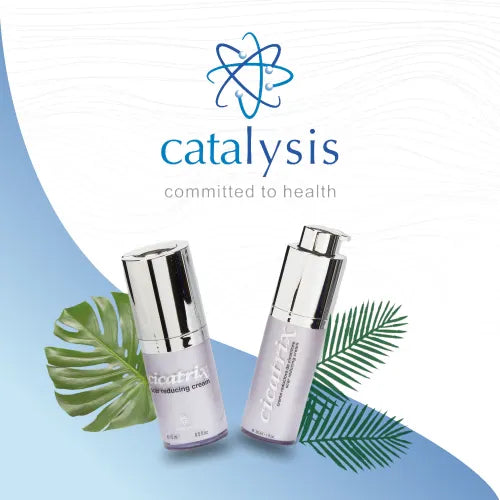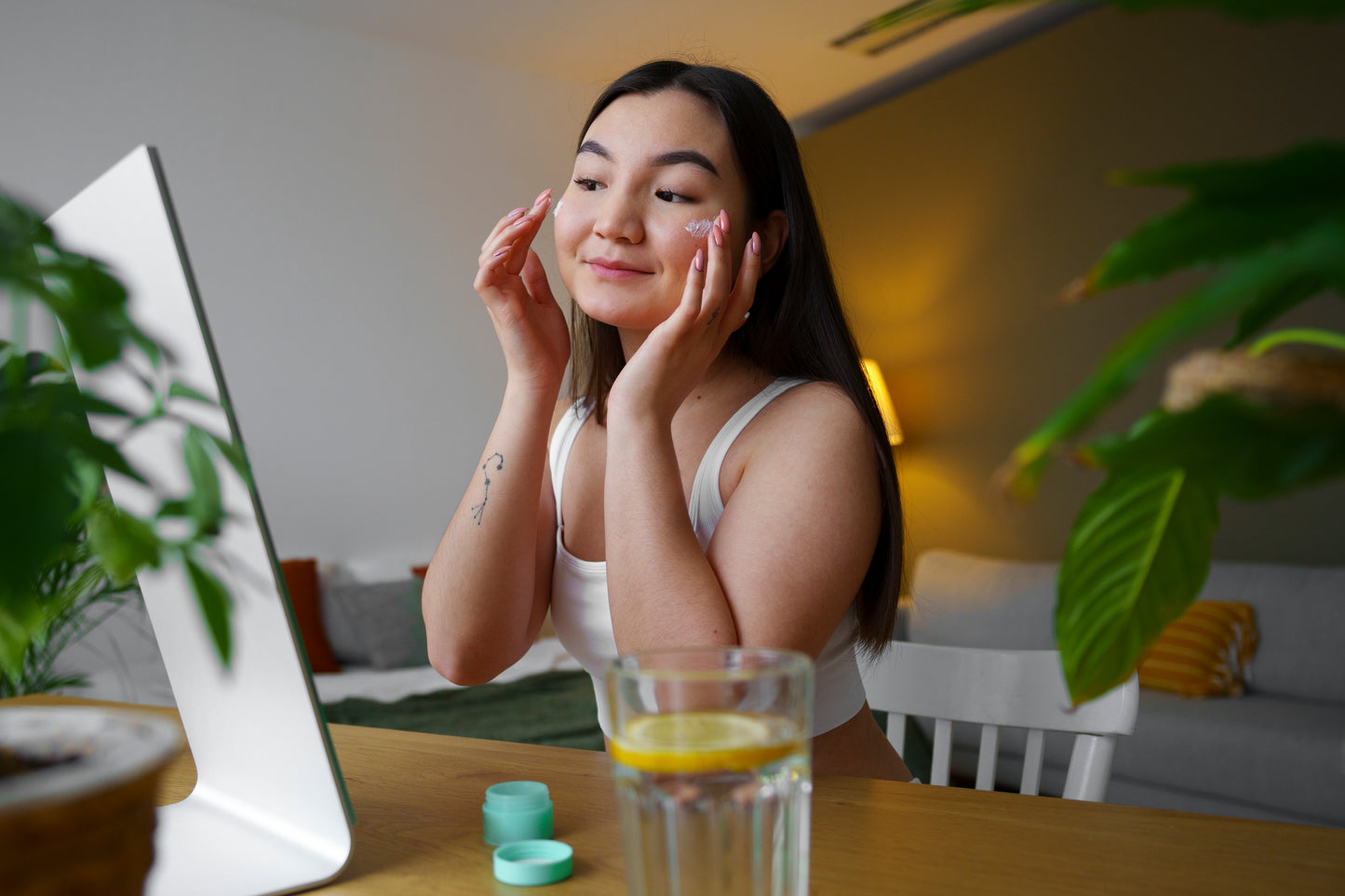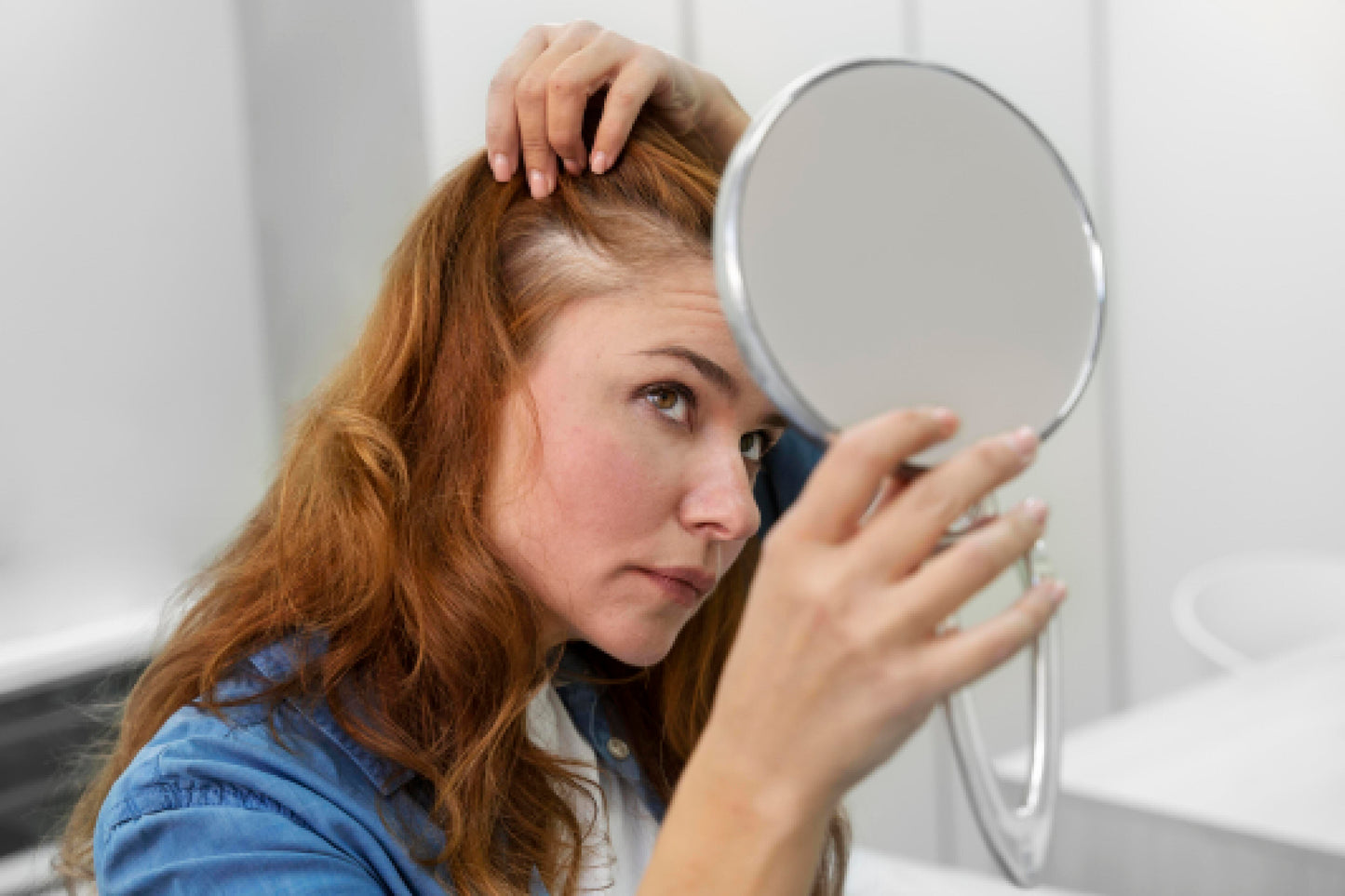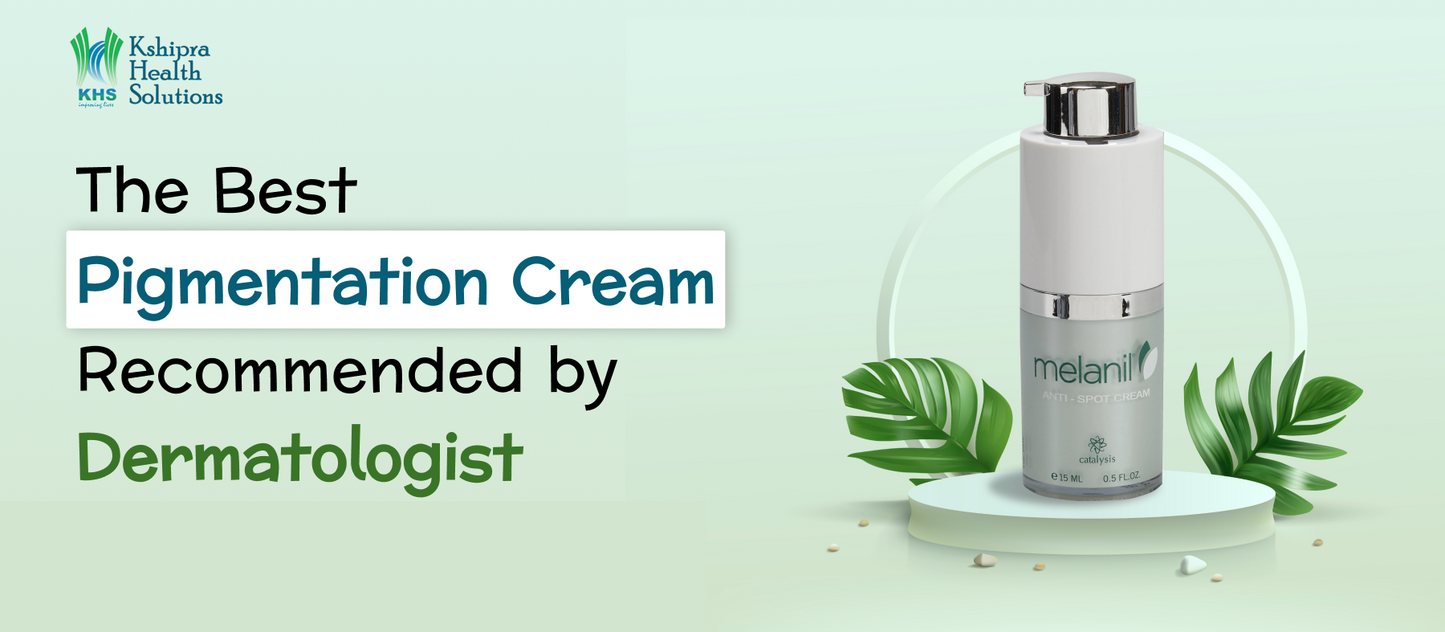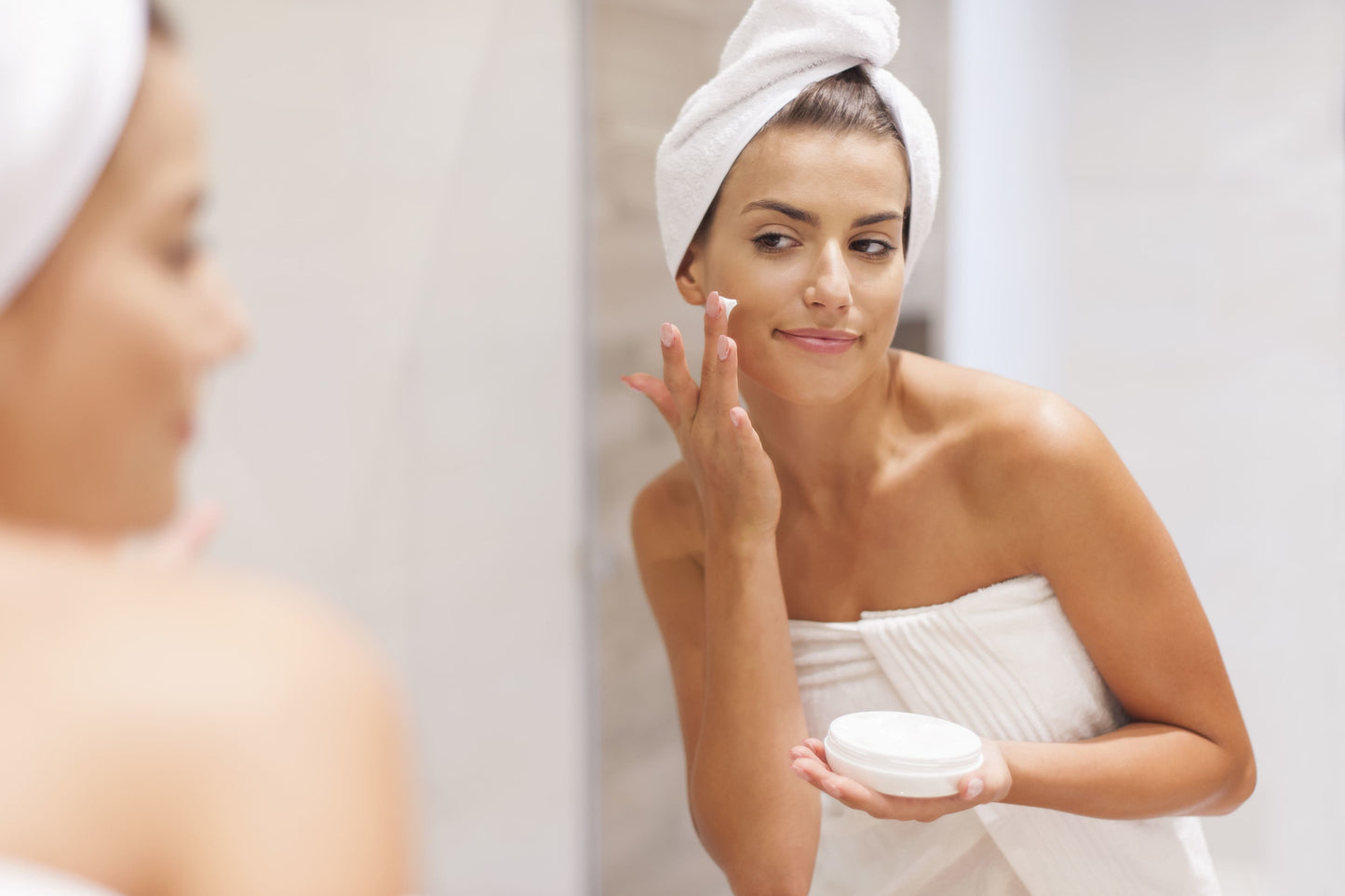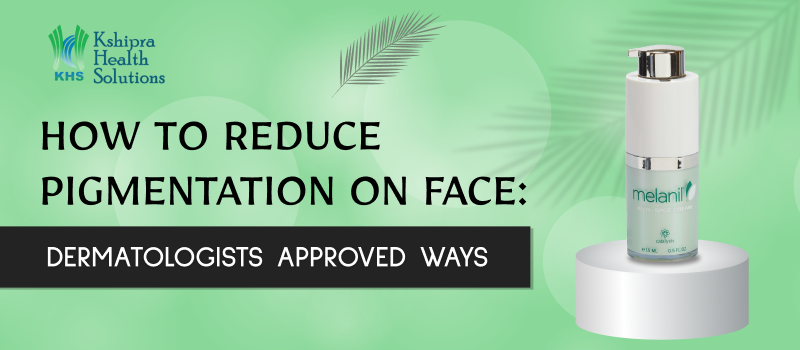
Skin tones exhibit a wide range with diverse tones, but this diversity often faces challenges in maintaining consistent color throughout one's life. Conditions like hypopigmentation (lighter patches) and hyperpigmentation (darker patches) create inconsistencies in facial appearance, hindering individuals from showcasing their best looks.
While makeup can hide pigmentation, it's crucial to address it directly. Treating pigmentation improves natural beauty and confidence without just covering it up. This promotes a sustainable and holistic approach to skincare, focusing on resolving the issue rather than concealing it.
If you bothered by the irregularities seen on your face and want to get rid of it, this can blog can help you with it. Keep reading to explore hyperpigmentation, its signs, and ways to overcome it.
What is pigmentation?

Pigmentation refers to the change in the tone of your skin, where melanin, which is responsible for imparting colour to the skin, has an imbalance in its functionality over certain areas of the skin. Some parts of the skin have too much or too little color.
As far as the symptoms are concerned, they generally revolve around:
• Lesions: Generally, symptoms manifest with blackish or brownish lesions on the skin.
• Skin Injuries: Pigmentation may arise from injuries, causing visible discoloration.
• Sun Exposure: Extended sun exposure can lead to the darkening of discolored patches, indicative of pigmentation.
• Raised Dark Patches: You can observe raised dark patches getting bigger overtime in certain instances, which can also serve as a symptom.
What are the Causes Behind Hyperpigmentation on Face?

Hyperpigmentation can stem from various factors, impacting individuals across diverse skin tones to different extents.
1. Inflammation:
Skin inflammation triggers an overproduction of melanin, the pigment responsible for skin color. This excess melanin, produced in response to inflammation, can lead to hyperpigmentation, causing darkened areas on the skin where inflammation occurred. Inflammation on your skin can be set off by factors such as eczema, acne, bug bites, cuts, and even friction from vigorous scratching.
2. Avoid Sun Exposure to Reduce Pigmentation on Face:
Exposure to sunlight prompts the skin to produce more melanin, causing a tan. However, frequent and prolonged exposure results in an accumulation of excess melanin, leading to hyperpigmentation—manifesting as dark spots. While these spots are typically non-cancerous, regular dermatologist check-ups are crucial to detect potential precancerous blemishes.
3. Melasma:
Melasma is a dermatological condition characterized by hyperpigmented patches, typically on the face. The root cause is melanin overproduction, the skin pigment. While impacting both genders, it's more prevalent in women, especially those with darker skin tones. Its recurring triggers found in the last few decades include hormonal shifts, sun exposure, genetics, and medication aftermath (birth control, menopause). In men, low testosterone is often linked to melasma, resulting in skin pigmentation, dullness, and darkening.
4. Medical conditions or medication
Skin darkening can be caused by various health issues and medications.
Diseases:
• Cushing's Syndrome: Excessive cortisol, a stress hormone, may overstimulate melanocytes. And then the prolonged exposure to elevated cortisol levels can contribute to increased melanin production, leading to skin darkening.
• Acanthosis Nigricans: This skin condition results in dark discoloration in body folds and creases, commonly appearing in areas like armpits and neck. The occurrence of this condition is also referred to as hyperpigmentation.
• Lichen planus: Lichen planus is a prevalent condition leading to skin inflammation, marked by swelling and irritation. Initially presenting as an itchy rash, persistent scratching induces inflammation, resulting in alterations to the skin's pigmentation over time.
Medications:
• Minocycline (Antibiotic): Prolonged use of minocycline can make melanocytes more active, leading to changes in skin color due to increased melanin stimulation.
• Nonsteroidal Anti-Inflammatory Drugs (NSAIDs): Using NSAIDs for a long time may affect the skin's color.
• Chemotherapy Drugs: Some cancer treatments can cause skin discoloration due to dead skin cells.
• Amiodarone (Heart Medication): This medication, used for heart rhythm issues, may cause pigmentation changes in the skin leading to blue-gray Discoloration
How to Reduce Pigmentation on Face with Kshipra Health Solutions?
To tackle skin darkening and dark spots, people adopt different daily routines, such as keeping their skin hydrated to promote cell renewal and avoiding scratching bug bites or minor injuries. Some even go to great lengths to stay out of the sun. However, constantly worrying about every little detail can turn your quality of life into a source of frustration.
But if there is a method that complements these habits, you get the leeway to eliminate several steps from the list in your efforts to combat hyperpigmentation. In such case, if you're looking for a product that fits into your routine, Kshipra Health's Melanil Cream (15 ML) could be the solution. It tackles dark spots, under-eye circles, and pigmentation, reducing skin tan. With all-natural ingredients, it's safe for long-term use. Using it twice daily yields optimal results without the risk of chemical reactions, thanks to its natural components.
How to reduce Hyperpigmentation on face with Melanin Cream
This cream is designed to lighten and erase skin blemishes triggered by genetic and various external factors. Within 3–4 weeks of consistent use, the spots begin to fade. It effectively addresses pigmentation from prolonged sun exposure, aging, pregnancy, and genetics. Its action involves inhibiting melanogenesis by blocking the enzyme tyrosinase, responsible for Melanin formation in melanocytes.
Our Melanil cream works wonders by diminishing existing dark spots on the skin and preventing the formation of new ones. It helps maintain the skin's soft and supple texture while offering protection against visible symptoms of sunburn
Check the chart below to get a clearer idea of the ingredient and how their characteristics fight against hyperpigmentation.
|
Ingredients |
What They Do |
|
Melanin |
Melanil, a skin component, absorbs UV light, providing protection against UVB and blue light. It also has antioxidant properties, guarding against reactive oxygen species, byproducts of cellular processes. |
|
Glabridin: |
Extracted from liquorice root which aids in exhibiting anti-inflammatory properties, contributing to a more even skin tone. It may help in reducing redness and irritation. |
|
Kojic acid: |
Obtained from Aspergillus ferment, Kojic acid is known for its skin-lightening properties, inhibiting melanin production and addressing hyperpigmentation. |
|
Arbutin: |
Extracted from bear berry, Arbutin acts as a melanin-inhibitor, helping to lighten dark spots and even out skin tone. |
|
Phenyl flavonoids: |
Extracted from white mulberry, Phenyl flavonoids contribute to antioxidant activity, potentially protecting the skin from oxidative stress and promoting a healthier complexion. |
|
Aloesin: |
Derived from Aloe vera, Aloesin possesses skin-soothing properties, aiding in calming irritation and promoting a more balanced and comfortable skin texture. |
How to Prevent Pigmentation on Face? [INFOGRAPHIC]
Along with your attempts on learning about how to reduce hyperpigmentation on face, it is also necessary to educate yourself about routines that can help you prevent it occurrence in the first place. We care about your skin health, and which is why we have prepared a list of tasks you can add in your skin care routine to keep the skin darkening issues at bay:

Conclusion
Reducing pigmentation is a team effort, and Melanil Cream is a key player in this skincare journey. When paired with dermatologist-approved strategies, it helps reveal clearer and radiant skin.
Follow our prevention tips regularly to rectify your uneven skin tone. If you are finding the solution on how to reduce dark pigmentation on face with Kshipra health’s Melanil Cream, you get to bask in the benefits of reducing existing dark spots, keeping new ones at bay, maintaining soft and supple skin, and shielding yourself from visible sunburn symptoms.
Visit our portal to explore all the dermatologists recommended products that can aid in improving your skin, fortifying your protection against the harmful UV rays, and address any skincare concerns you've been dealing with.
FAQs on How to Reduce Pigmentation on Face
Is it possible to prevent new pigmentation from forming?
Yes, preventive measures include consistent sun protection, avoiding excessive sun exposure, and using skincare products that inhibit melanin production. These actions can help prevent the formation of new pigmented spots.
How long does it take to see results in pigmentation reduction?
Results vary from person to person, but consistent use of pigmentation-reducing products may show improvements within a few weeks to month
Is hyperpigmentation a reversible condition?
Hyperpigmentation is often manageable and reversible. Treatments like topical creams, chemical peels, laser therapy, and microdermabrasion can effectively lighten dark spots and promote an even skin tone. For those seeking solutions on how to reduce hyperpigmentation around mouth and other specific areas with smaller spots or blemishes, our product is a reliable option.
